- Home
- Philip Pullman
Daemon Voices Page 27
Daemon Voices Read online
Page 27
Now I’m going to make another right-angled swerve and talk briefly about two more illustrators, one being the great Peter Bailey, who’s done several books of mine.
These illustrations (see overleaf) are both from Northern Lights, in an edition published by the Folio Society. The Folio Society, of course, has resolutely gone on publishing books with pictures in them when most commercial publishers, mainstream publishers, had long given up. When they proposed an edition of His Dark Materials I was delighted, not least because it would give me another chance to see my words illustrated by Peter Bailey. He’d done my four fairy tales beautifully, but this was a different scale of thing, and all I can say is that I’m very happy with it. First, Lyra in the opening scene, and then a little later on, trying to make sense of the alethiometer for the first time. What Peter does very well, it seems to me, is get the sense of Lyra’s character, as well as the setting she’s in.
Lyra (left), Lyra making sense of the alethiometer (right) by Peter Bailey for the Folio Society (see also this page and this page)
Illustration for Chapter 14 of The Golden Compass, by the author
Last in the pictures I’m going to show are some of my own. When The Golden Compass was in preparation, the editor suggested having a little decorative device at the opening of every chapter, and after some persuasion I managed to get him to agree to a different one for each chapter, and furthermore to let me draw them. They were going to be printed very small indeed, so my limited skills wouldn’t ruin a whole page. After some experimenting I fixed on a size to draw them at—a square six centimetres by six—and a sort of style that depended on heavy blacks and solid whites, which wouldn’t get lost in the printing—they were going to be about postage stamp size, and the paper was pretty cheap and coarse too, and couldn’t take fine lines. This is the borderland between the book and its writer, you could say.
The very last chapter decoration in The Golden Compass was the one below.
Illustration for Chapter 38 of The Amber Spyglass, by the author
It took ages—I must have done hundreds till I got Lyra’s face looking more or less right. She’s looking up at the universe opening out above her, and wondering at the extraordinary spectacle while being daunted by the thought of what she now has to do, while simultaneously being absolutely determined to do it…I tried to get some of that into her expression, and I’m quite pleased with it. But as far as we’re concerned here, the most significant thing is what’s not there. Every one of the other pictures is in a box—it has a frame, a border around it. This one doesn’t. All the barriers have been smashed, all the frontiers have been blown away, the whole universe is wide open; so there’s nothing shutting her in.
Illustration for Chapter 23 of The Golden Compass, by the author
And now the last picture of all. How could I represent the subject of the last chapter of The Amber Spyglass, in which Lyra and Will have to part? Their farewell takes place in the Botanic Garden in Oxford, and I went there and drew this bit and that bit but none of my attempts worked. Finally I decided to abandon the idea of simple representation—the heart of that chapter isn’t about a place or a space, really, it’s about love and loss—so I thought it best to be kind of abstract about it and go for something entirely symbolic.
It could be more elegant—if Fritz Wegner had done it, it certainly would have been—but there we are. Will and Lyra are bound together by their love, but they have to face away from each other for ever. I think a sort of emblem rather than a picture was the only way of doing this, so that’s what I ended the book with. And that seemed the right place to stop.
THIS TALK WAS DELIVERED AT EXETER UNIVERSITY, 21 JANUARY 2010.
If I’d learned to draw properly when I was young I might have gone straight into making comics, or illustrating books by other people. I love all the business of drawing, the pencils, the paper, the ink, all of it, but I know my limitations; and besides, if I had to do it for a living, instead of playing at it, I might not enjoy all the stuff that goes with it. Or not so much.
Oliver Twist
AN INTRODUCTION
On energy, murder, plausibility, melodrama and myth
Energy, pure untrammelled strength and vigour: an energy so prodigious that it throws off vivid sparks of glee and gives out spontaneous flares of combustion. Dickens has many great qualities (and, to be sure, there are some qualities he lacks), but the ones he has in abundance are all aspects of that vast original energy.
Consider the young author in 1836, at the age of twenty-four. He is partway through his first great success, the serialisation of The Pickwick Papers. He is offered a contract to edit a new monthly magazine, Bentley’s Miscellany. He agrees to supply sixteen pages of new material for each issue—no mention of what sort of material it is to be—although he is already committed to a three-volume novel for one publisher and two more of the same length for another, not to mention twelve more numbers of Pickwick, a further series of his Sketches by Boz and the libretto of a comic operetta called The Village Coquettes.
But what does that matter? Of course he can write sixteen extra pages a month. He signs the contract and sets to work. His first contribution is a farcical short story. But as it happens, the young author’s first child is born in the same week as the first issue of Bentley’s Miscellany, and perhaps that event ignites another flare of that exuberant energy. Suppose a child were born in mysterious circumstances…And suppose his mother, who had a secret, were to die at once…And suppose this were to happen in a workhouse…
It’s not hard to see the attraction of this theme for the young Dickens. Pickwick was comic, broadly and exuberantly so. This new long story could strike a quite different note: it could be grim and dark and melodramatic; it might even involve the most lurid and ghastly motif of all—murder. (When he was five, Dickens had been enthralled and terrified by the stories a maidservant told him about a cannibalistic villain called Captain Murderer. Some of the horrid thrill he felt then must have stayed with him for a long time, perhaps for the rest of his life.)
And a new subject for a writer is like a new colour for a painter. What can we do with it? What will it look like next to that other colour we discovered last time? Comedy and murder, side by side in the same story: will it work? There are few excitements comparable to that of sensing, not quite visible yet but nearby, very close, only an arm’s length away, a new kind of story to tell. The twenty-four-year-old Dickens must have sensed the whole of his nature leaping to the idea like a magnet to a steel rod.
And so he began, in January 1837, and for some time the two novels were written turn and turnabout. For the first two weeks in the month, he wrote Oliver Twist, and for the other two, he worked on The Pickwick Papers. In November of that year Pickwick came to an end, and three months later, after various other short pieces, Dickens began his next novel, Nicholas Nickleby, writing that and Oliver Twist side by side in the same manner.
From then on, all his novels were to be written and published in serial form. Unlike some novelists, Dickens did not write the whole story before it came out in parts: he really did make it up as he went along. Six months before the serialisation of Oliver Twist came to an end, there were two separate adaptations of it already playing on the London stage, but Dickens said in a letter to one of the theatrical managers concerned that: “Nobody can have heard what I mean to do with the different characters, inasmuch as I don’t quite know, myself.”
Of course, there may have been something disingenuous in that remark, and we know that later in his career, at the time of Bleak House (1852), for example, he did make extensive notes on the composition of his work in hand; but there is still an engaging air of youthful improvisation about Oliver Twist. His brother-in-law Henry Burnett tells of an evening when he and his wife called on Mrs. Charles Dickens and sat talking with her. Dickens came to join them, but sat apart writing
at a little table, and “every now and then (the feather of his pen still moving rapidly from side to side) put in a cheerful interlude. It was interesting to watch, upon the sly, the mind and the muscles working (or, if you please, playing) in company, as new thoughts were being dropped upon the paper.”
Does it show in the finished text? Perhaps a more considered approach would have relied less on outrageous coincidence as a means of moving the plot along. Take Oliver’s exercise in pocket-picking, or fogle-hunting, in the company of the Artful Dodger. How likely is it, really, that their very first victim should happen to be the oldest friend of Oliver’s dead father?
Or take the house-breaking expedition to Chertsey. In a radius of thirty miles from London there must have been thousands of houses full of tempting silver plate. But this is the one Bill Sikes heads for, and this is where Oliver is shot and wounded, and where he’s taken in and looked after by the kindly women who live there; and how likely is it that one of them should happen to be the sister of Oliver’s dead mother?
The answer is, not in the very least. Coincidences do happen in real life, to be sure, but to offer them quite so blatantly is to stretch plausibility well past snapping-point. But more importantly: does it matter? There’s an artistic pattern emerging here which might be worth the sacrifice of likelihood. With each crime Oliver is involved in, he struggles against it with all his strength, and each time it turns out that the victim is closely involved with his own unknown history—with himself, in fact. He is being led by the agents of wickedness into something damaging to his own integrity, and each time that very integrity fights back and saves him. Only later do we see what’s going on underneath: his half-brother, the sinister Monks, is deliberately trying to corrupt him. It makes symbolic sense for the crimes he’s involved in to be designed to harm those who represent his own background.
On the other hand, the coincidences don’t end there. Take Chapter 42, when Noah Claypole and Charlotte re-enter the story. There are dozens of public houses nearby where they could stop for refreshment; so how likely is it that they should make their way to the very one where the villainous Fagin just happens to come by and find them? (“Of all the gin-joints in all the towns in all the world…”)
But although that’s the sort of thing that makes our eyebrows rise when we see it on the printed page, it would be quite different if we saw it inside a proscenium arch by the lurid gaslight of a theatre. I’ve already mentioned the early dramatic adaptations of Oliver Twist; and in this context, a remark that Dickens made twenty years after completing that novel illuminates much of his approach to storytelling. In a speech to the Royal General Theatrical Fund in 1858, he said, “Every writer of fiction, though he may not adopt the dramatic form, writes in effect for the stage.”
Throughout his life, Dickens was powerfully attracted to the theatre. His involvement with amateur theatricals, his close association with professional actors, and not least his own public readings, which were powerfully dramatic—all testify to his great love of the stage. What matters here is the effect that passionate interest had on the way he told stories on the page. Again and again he comes up with scenes and characters whose brilliance and force (or, to be sure, whose exaggeration and sheer noise) seem to demand darkness and limelight, a proscenium, an auditorium, an audience, in order to achieve their full effects.
It’s partly a matter of space and scale: in order to be seen clearly from a distance, effects have to be broad enough to seem coarse when close to. This, I’m sure, is part of the source of Dickens’s particular melodramatic quality. His story was occupying a mental space that demanded vivid light and profound darkness and loud volume in order for the events and the characters to be perfectly clear to the furthest occupant of the highest seat in the gods, and that colossal energy of his was equal to the task. Hence the dramatic quality of such scenes as Oliver asking for more gruel; as the boys practising their pickpocketing under the direction of Fagin; as the murder of Nancy.
Later in Dickens’s career, he was actually writing for a medium that didn’t yet exist: I mean, the cinema. The opening chapter of Bleak House, for example, or the Veneerings’ dinner party in Our Mutual Friend, are nothing less than shooting scripts complete with camera angles, and with stage directions in the appropriate present tense. One little thing makes it clear that we’re in the realm of the cinematic, and not the theatrical: Dickens was a master of the close-up (the fog in the stem and bowl of the skipper’s pipe in Bleak House; Mr. Podsnap’s large allowance of crumpled shirt-collar in Our Mutual Friend). There are no close-ups on the stage. As his command grew, so the dramatic effects became more rich and subtle; but they were always devoted to the end of making the reader see.
In Oliver Twist, for all the dramatic force, we can still find an occasional clumsiness when it comes to stage management. There is an odd moment in Chapter 39, during the scene between Fagin and Nancy. Monks comes in, and wants to speak to Fagin privately, so the two of them withdraw upstairs. Nancy, fearful and anxious to penetrate the mystery, “ascended the stairs with incredible softness and silence; and was lost in the gloom above.” Do we go with her? No. We’re left with a bare stage: “The room remained deserted for a quarter of an hour or more; the girl glided back with the same unearthly tread…” Why does the author make us stay in a deserted room when he could just as easily take us upstairs with Nancy and let us eavesdrop with her? Because it’s not the best time for the reader to learn what she learns, that’s why. But all the same, that empty room; that quarter of an hour! Perhaps Dickens’s attention was momentarily elsewhere. Perhaps he was writing that passage when his brother-in-law called.
As well as illuminating the broad melodrama of the big effects, that incandescent energy of Dickens also shows the tiny details of behaviour, the little incidents that he seems to find at the tip of his goose-quill, that spring into being the moment he writes them down. Mr. Bumble, in his humiliation, absently and automatically boxing the ears of the boy who opens the gate for him; Sikes’s dog wagging his tail, although he senses that Sikes wants to kill him; Nancy stooping to kiss the drugged lips of Sikes before she goes out to betray Monks to Rose; Sikes himself, after the murder, returning to Jacob’s Island:
He laid his hand upon a chair which stood in the middle of the room, but shuddering as he was about to drop into it, and seeming to glance over his shoulder, dragged it back close to the wall—as close as it would go—ground it against it—and sat down.
Sikes grinding the chair against the wall as if to obliterate Nancy’s ghost—who could have worked that detail out beforehand, in cold blood? Scarcely anything could bring his horror more vividly to life; and such is the speed and vigour of the passage that Dickens seems to have found it there when he got to it.
Oliver Asking for More by George Cruikshank
When the first edition of a book to appear before the world happens to have illustrations, it’s worth looking at them, since the text will have been written in the knowledge that there would be pictures as well as words on the page. In the case of Oliver Twist, the illustrator was George Cruikshank, who had already illustrated several of the Sketches by Boz, and who had become a friend of Dickens. Later in life they quarrelled, and the friendship faded; in fact, after Dickens died, Cruikshank claimed to have originated the story of Oliver Twist himself, the illustrator suggesting the plot and the characters to the author rather than the other way round. Whatever the truth of that (and it doesn’t seem likely to me), Cruikshank certainly worked closely with Dickens as this story developed.
The result is a series of illustrations that almost matches the words for vividness and memorability. Cruikshank’s wiry line scribbles in the darkness, bringing all kinds of grotesques into the half-light. He had the gift of selecting the most dramatic moments in the tale, and of staging them to bring out their fullest effects—which, just like the prose, are often matters of detail. Look at the eyes in
the picture of Oliver asking for more gruel; for example: the wide-eyed faces of the seven other boys watching (one has his back to us, and is desperately tilting back his bowl to get at the last of what’s in it), the horrified pop-eyed look on the face of Mr. Bumble, his head isolated against a lighter patch of wall.
Fagin in the Condemned Cell by George Cruikshank
Or the disposition of Fagin’s body in the condemned cell: desperately chewing the fingers of one hand, he hugs the other arm to his breast, and his knees are pressed together while his heels seem to be lifted off the floor, as if he’s helplessly rehearsing what’s going to happen in the morning.
Or Sikes’s dog, unwilling to come and be drowned: was there ever a more abject creature than poor Bull’s-eye? His tail is firmly tucked between his legs, but a front paw is lifted half in defence, half in appeasement, while Sikes tries to conceal the stone and the handkerchief.
Sikes Attempting to Destroy His Dog by George Cruikshank
The first readers of Oliver Twist would have experienced the pictures and the words together, and from the beginning the two must have been inseparable in the public mind. The film director Michael Powell (The Red Shoes, A Matter of Life and Death) recognised the importance of the conjunction of words and pictures in popular fiction; he maintained that “the silent film, the sound film, the colour film, TV, videotape, all the audio-visual storytelling inventions of the next ninety years” had their origins in Sidney Paget’s illustrations to Conan Doyle’s Sherlock Holmes stories in the Strand Magazine. “The pictures, as much as the text,” he said, “created the immortal folk figure.”

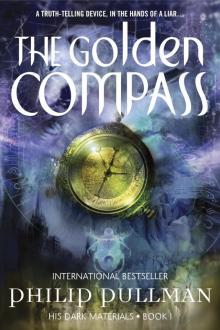 The Golden Compass
The Golden Compass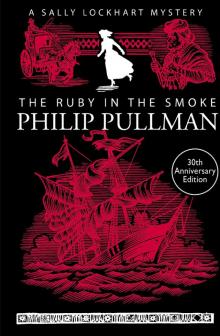 The Ruby in the Smoke
The Ruby in the Smoke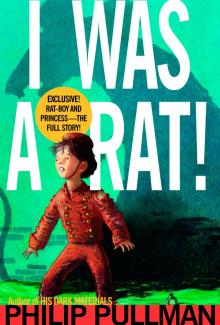 I Was a Rat!
I Was a Rat!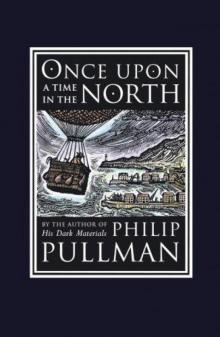 Once Upon a Time in the North
Once Upon a Time in the North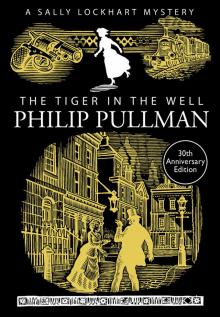 The Tiger in the Well
The Tiger in the Well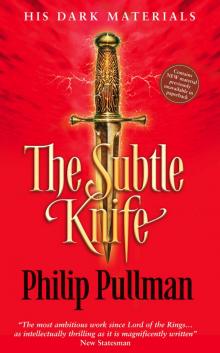 The Subtle Knife
The Subtle Knife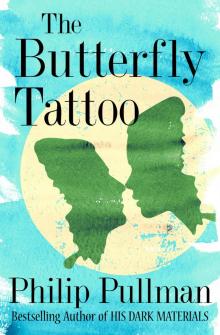 The Butterfly Tattoo
The Butterfly Tattoo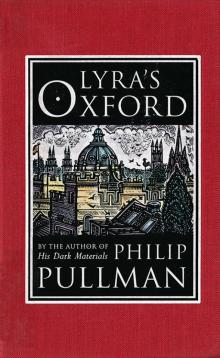 Lyra's Oxford
Lyra's Oxford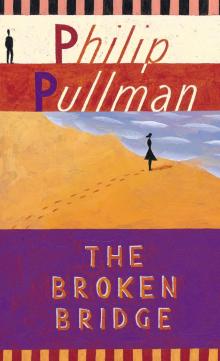 The Broken Bridge
The Broken Bridge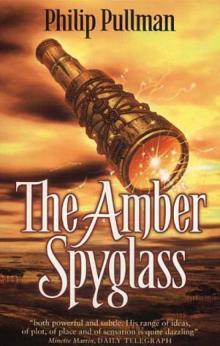 The Amber Spyglass
The Amber Spyglass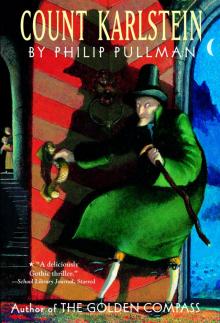 Count Karlstein
Count Karlstein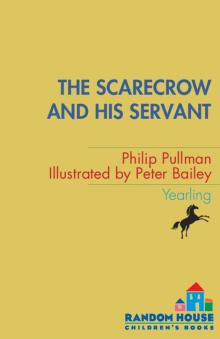 The Scarecrow and His Servant
The Scarecrow and His Servant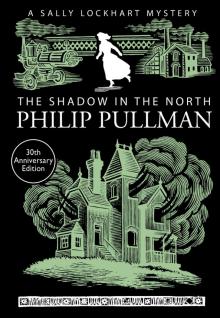 The Shadow in the North
The Shadow in the North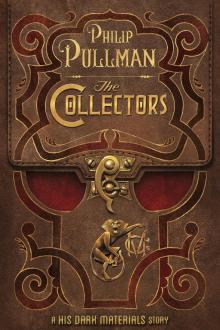 The Collectors
The Collectors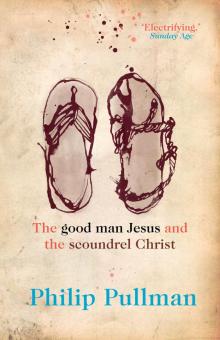 The Good Man Jesus and the Scoundrel Christ
The Good Man Jesus and the Scoundrel Christ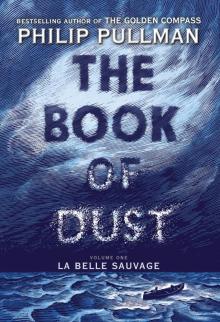 La Belle Sauvage
La Belle Sauvage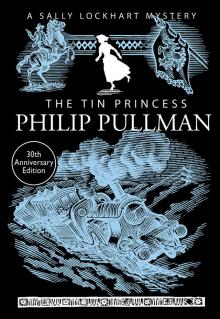 The Tin Princess
The Tin Princess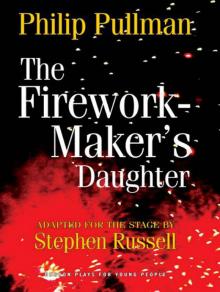 The Firework-Maker's Daughter
The Firework-Maker's Daughter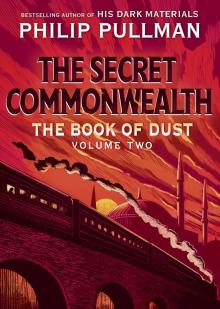 The Book of Dust: The Secret Commonwealth (Book of Dust, Volume 2)
The Book of Dust: The Secret Commonwealth (Book of Dust, Volume 2)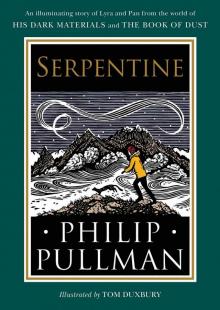 Serpentine
Serpentine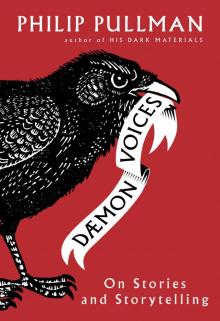 Daemon Voices
Daemon Voices The Amber Spyglass: His Dark Materials
The Amber Spyglass: His Dark Materials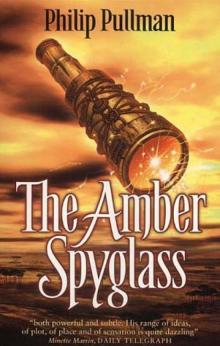 The Amber Spyglass hdm-3
The Amber Spyglass hdm-3 The Haunted Storm
The Haunted Storm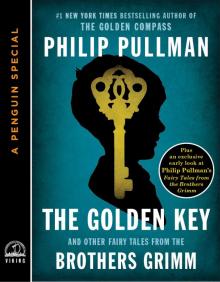 The Golden Key
The Golden Key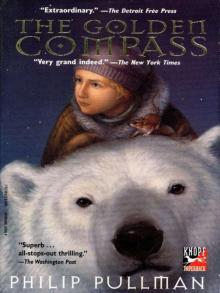 His Dark Materials 01 - The Golden Compass
His Dark Materials 01 - The Golden Compass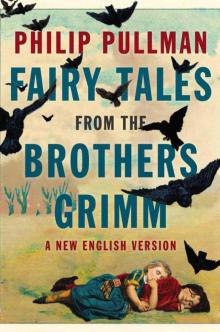 Fairy Tales from the Brothers Grimm: A New English Version
Fairy Tales from the Brothers Grimm: A New English Version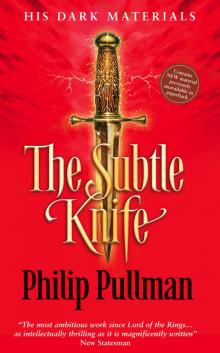 His Dark Materials 02 - The Subtle Knife
His Dark Materials 02 - The Subtle Knife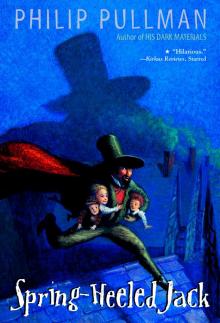 Spring-Heeled Jack
Spring-Heeled Jack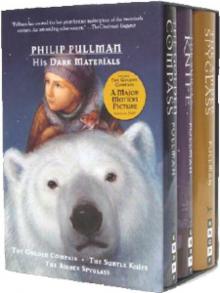 The Golden Compass hdm-1
The Golden Compass hdm-1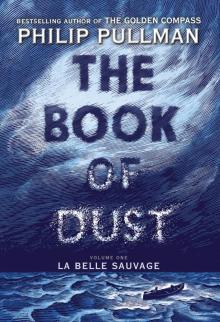 The Book of Dust, Volume 1
The Book of Dust, Volume 1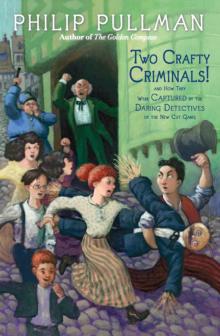 Two Crafty Criminals!
Two Crafty Criminals!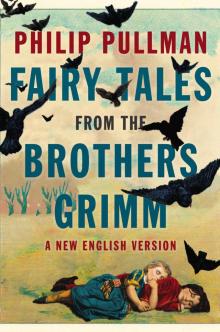 Fairy Tales from the Brothers Grimm
Fairy Tales from the Brothers Grimm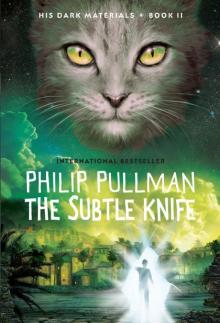 The Subtle Knife: His Dark Materials
The Subtle Knife: His Dark Materials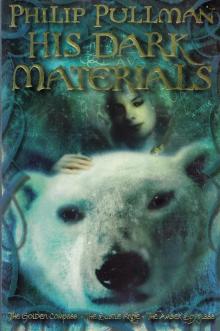 His Dark Materials Omnibus
His Dark Materials Omnibus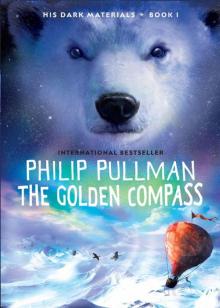 The Golden Compass: His Dark Materials
The Golden Compass: His Dark Materials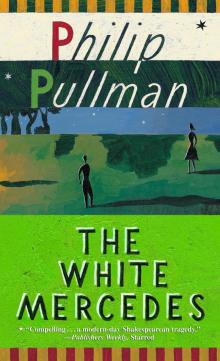 The White Mercedes
The White Mercedes